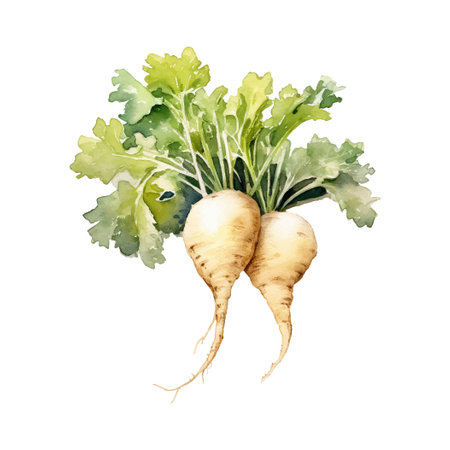Lighting Issues
One of the most common challenges for apartment and city dwellers growing an indoor herb garden is dealing with limited natural sunlight. Insufficient light can cause herbs to become “leggy”—meaning they stretch out with long, weak stems and sparse leaves. You might also notice pale or yellowing foliage, both signs that your plants aren’t getting enough light. To fix this, first assess your current setup: south-facing windows provide the most direct sun, so place your herbs as close to these as possible. If your space only offers indirect or low light, consider investing in LED grow lights designed for indoor gardening. These are energy-efficient and can be mounted under cabinets or on shelves, making them perfect for small urban spaces. Set timers for 12-16 hours of light per day to mimic natural daylight cycles. Rotate your pots regularly so each side gets equal exposure, preventing uneven growth. With the right lighting solutions tailored for city living, you’ll keep your indoor herb garden healthy and thriving all year long.
Watering Woes
If you’re growing herbs on a city balcony or inside a cozy apartment, watering can be surprisingly tricky. Overwatering, underwatering, and irregular schedules are some of the most common issues indoor herb gardeners face. Here’s how to spot the signs, fix the problems, and create a foolproof watering routine for your small-space herb garden.
Overwatering vs. Underwatering
Each herb has its own preferences, but most indoor varieties hate soggy soil as much as bone-dry roots. Here’s a quick reference to help you diagnose what’s happening with your plants:
| Symptom | Possible Cause | Solution |
|---|---|---|
| Yellowing leaves, mushy stems | Overwatering | Let soil dry out; ensure pot has drainage holes; reduce watering frequency |
| Wilting, dry crispy leaves | Underwatering | Water thoroughly when top inch of soil is dry; check more frequently in sunny spots |
| Dull growth, leaf drop at random times | Inconsistent schedule | Stick to a regular routine; set reminders if needed |
Finding the Right Routine for Your Herbs
Urban apartments often have fluctuating temperatures and humidity, so it’s important to adjust your watering based on your unique space rather than just following a generic calendar. Here are some practical tips for American city dwellers:
- Test Before You Water: Use your finger—if the top inch feels dry, it’s time to water.
- Pots Matter: Choose containers with drainage holes to avoid root rot.
- Create a Schedule: In smaller spaces, herbs may dry out faster near heaters or windows. Set phone reminders to check your plants twice a week.
- Group Smartly: Keep thirstier herbs like basil together and separate from drought-tolerant ones like rosemary.
- Avoid “Just Because” Watering: Only water when the plant actually needs it—habitual overwatering is a common mistake!
Your Small-Space Watering Checklist
- Check soil moisture regularly (every 2–3 days)
- Observe how quickly pots dry out after watering—adjust frequency seasonally
- Avoid letting herbs sit in excess water trays or saucers
- If unsure, err on the side of slightly dry rather than too wet—most herbs recover better from drought than drowning!
![]()
3. Battling Pests Indoors
Even in a cozy urban apartment, pests can find their way into your indoor herb garden. The most common culprits include aphids, spider mites, whiteflies, and fungus gnats. These tiny invaders can quickly sap the vitality from your basil, mint, or rosemary if left unchecked. Before reaching for chemical sprays, consider safe, eco-friendly solutions that keep your indoor air clean and your herbs kitchen-ready.
Spotting the Usual Suspects
Aphids appear as small green or black clusters on tender stems and leaf undersides. Spider mites are almost invisible but leave fine webbing between leaves. Whiteflies flutter up when you brush against your herbs, while fungus gnats look like tiny black flies hovering near the soil surface.
Safe Remedies for Urban Spaces
- Neem Oil Spray: Mix a few drops of neem oil with water and a little mild soap. Mist your plants weekly to deter most pests without leaving harmful residues.
- Sticky Traps: Place yellow sticky cards near your herbs to catch whiteflies and gnats before they multiply.
- Manual Removal: Use a damp cloth or gentle spray of water to knock aphids and mites off leaves—perfect for small spaces where thorough inspection is easy.
Prevention is Key
Maintain good airflow by not crowding pots on your windowsill or balcony. Let the top inch of soil dry out between waterings to discourage gnats. Regularly inspect your herbs so you can act fast at the first sign of trouble. With these urban-friendly tips, you’ll keep your indoor garden fresh, healthy, and free from unwanted guests—all without resorting to harsh chemicals.
4. Soil and Nutrition Problems
Even with plenty of sunshine and regular watering, your indoor herb garden might struggle if the soil isn’t right or if essential nutrients are missing. Let’s pinpoint common issues city dwellers face with potting mix, drainage, and nutrition—and how to fix them in a small-space-friendly way.
Spotting Soil Issues
Poor soil can cause stunted growth, yellowing leaves, or wilting herbs. Common culprits include compacted potting mix, lack of drainage, or old soil that’s lost its punch. City apartments often mean reusing pots and soil—sometimes for too long!
| Problem | What You’ll Notice | Simple Fixes |
|---|---|---|
| Compacted or Old Soil | Roots can’t spread; water pools on top | Repot with fresh, lightweight organic potting mix; add perlite for airiness |
| Poor Drainage | Soil stays soggy; roots look brown or mushy | Use pots with drainage holes; add a layer of pebbles at the bottom if needed |
| Nutrient Deficiency | Pale leaves, slow growth, weak stems | Add all-purpose liquid fertilizer monthly; sprinkle worm castings for a natural boost |
City-Smart Soil Solutions
In a small apartment or urban balcony, you may not want bags of dirt lying around. Opt for compact bags of indoor-specific potting mix from local hardware stores or community gardens. Consider mixing in kitchen compost (like eggshells or coffee grounds) to enrich your soil without extra trips outside.
Quick Tips for Urban Gardeners:
- Refresh soil every season: Herbs deplete nutrients fast—swap out soil at least twice a year.
- Avoid garden dirt: Outdoor soil is heavy and may carry pests indoors.
- Trouble with pests? Sprinkle cinnamon on the soil surface—it’s a natural antifungal and smells great inside!
Troubleshooting Checklist:
- Are your pots draining well after watering?
- Does your potting mix feel loose and fluffy?
- Have you fed your herbs in the past month?
- If you answered “no” to any of these, it’s time for a quick soil refresh!
Staying attentive to your indoor herb garden’s soil and nutrition ensures lush basil, fragrant thyme, and more—even if you’re growing in the heart of the city.
5. Humidity and Temperature Hiccups
Maintaining the right indoor climate for your herb garden can be tricky, especially in American cities where weather and air conditioning fluctuate wildly. Most herbs thrive at temperatures between 65°F and 75°F, but those urban heat waves or icy blasts from AC units can stress your plants. Basil, mint, and cilantro are particularly sensitive to drafts or sudden temperature changes, so try to keep their environment as consistent as possible.
How Humidity Affects Your Herbs
Indoor air tends to be dry—especially during winter when heating is running nonstop. Low humidity causes leaf edges to brown and soil to dry out faster. Grouping your herbs together helps create a mini microclimate with higher humidity. You can also place a shallow tray of water near your pots or use a small humidifier, which works wonders in apartment spaces.
Tips for Managing Temperature Swings
- Keep herb containers away from direct blasts of cold or hot air from vents.
- If your windowsill gets too chilly at night, move herbs further inside after sunset.
- During summer, avoid placing herbs right next to sun-baked window glass—use sheer curtains to diffuse intense sunlight.
Urban Herb Gardener’s Checklist
- Monitor temperature with an indoor thermometer placed near your plants.
- Mist herb leaves lightly if you notice crispy tips (but don’t overdo it).
- If you’re using grow lights, make sure they aren’t generating excess heat close to foliage.
By paying attention to these small environmental tweaks, you’ll help your indoor herb garden flourish—even in the unpredictable climate of city life or the constant hum of air conditioning. Consistency is key for happy, flavorful herbs on your urban balcony or kitchen counter!
6. Managing Space Constraints
Living in a compact apartment or working with a petite urban balcony doesn’t mean you have to give up on your indoor herb garden dreams. It just means you’ll need to get creative and strategic with your space! Here are some smart solutions for making the most of every square foot.
Go Vertical
When floor space is limited, think up! Vertical gardening options like wall-mounted shelves, hanging planters, or even pocket organizers can dramatically increase your growing area without taking up precious living space. These setups let herbs bask in sunlight near windows or along balcony railings while keeping countertops clear.
Multi-Use Planters and Furniture
Maximize function by choosing dual-purpose furniture—think benches with built-in planter boxes or tables that double as mini-greenhouses. Window sills and kitchen carts are also prime real estate for smaller pots. Rolling carts make it easy to move your herbs to catch more sunlight or free up space when needed.
Stacking and Tiered Solutions
Tiered plant stands or stackable pots allow you to grow multiple herbs upward instead of outward. This not only saves space but also adds visual interest to your home or balcony. Be sure each tier receives enough light, especially if you’re relying on natural sun from a single direction.
Smart Lighting Choices
If sunlight is scarce, supplement with compact LED grow lights that fit under cabinets or shelves. Many modern designs are slim and unobtrusive, perfect for small apartments. Set them on timers to ensure consistent light, helping herbs thrive regardless of your home’s orientation.
By embracing verticality, multifunctional designs, and clever lighting, even city dwellers can cultivate a lush and productive indoor herb garden—no backyard required!


